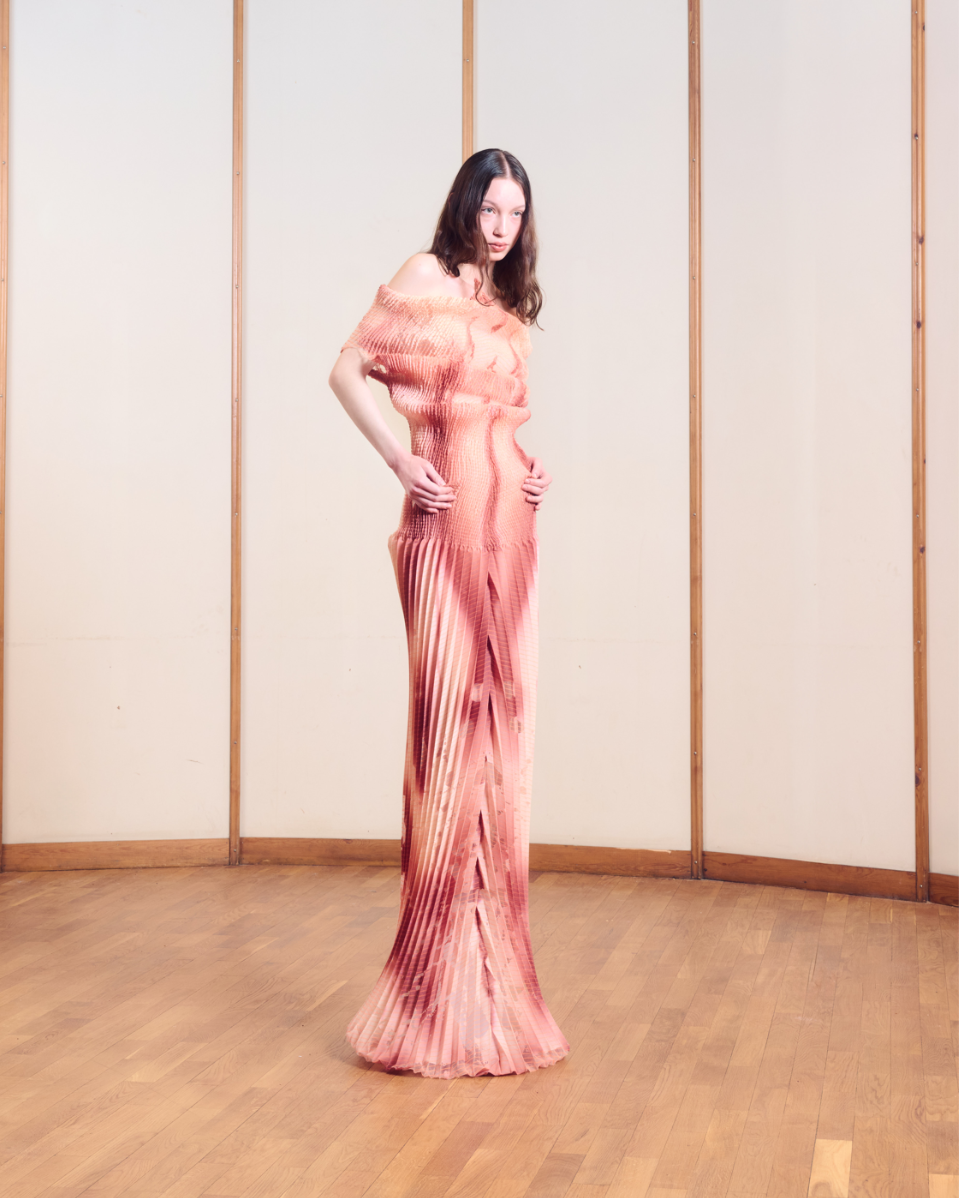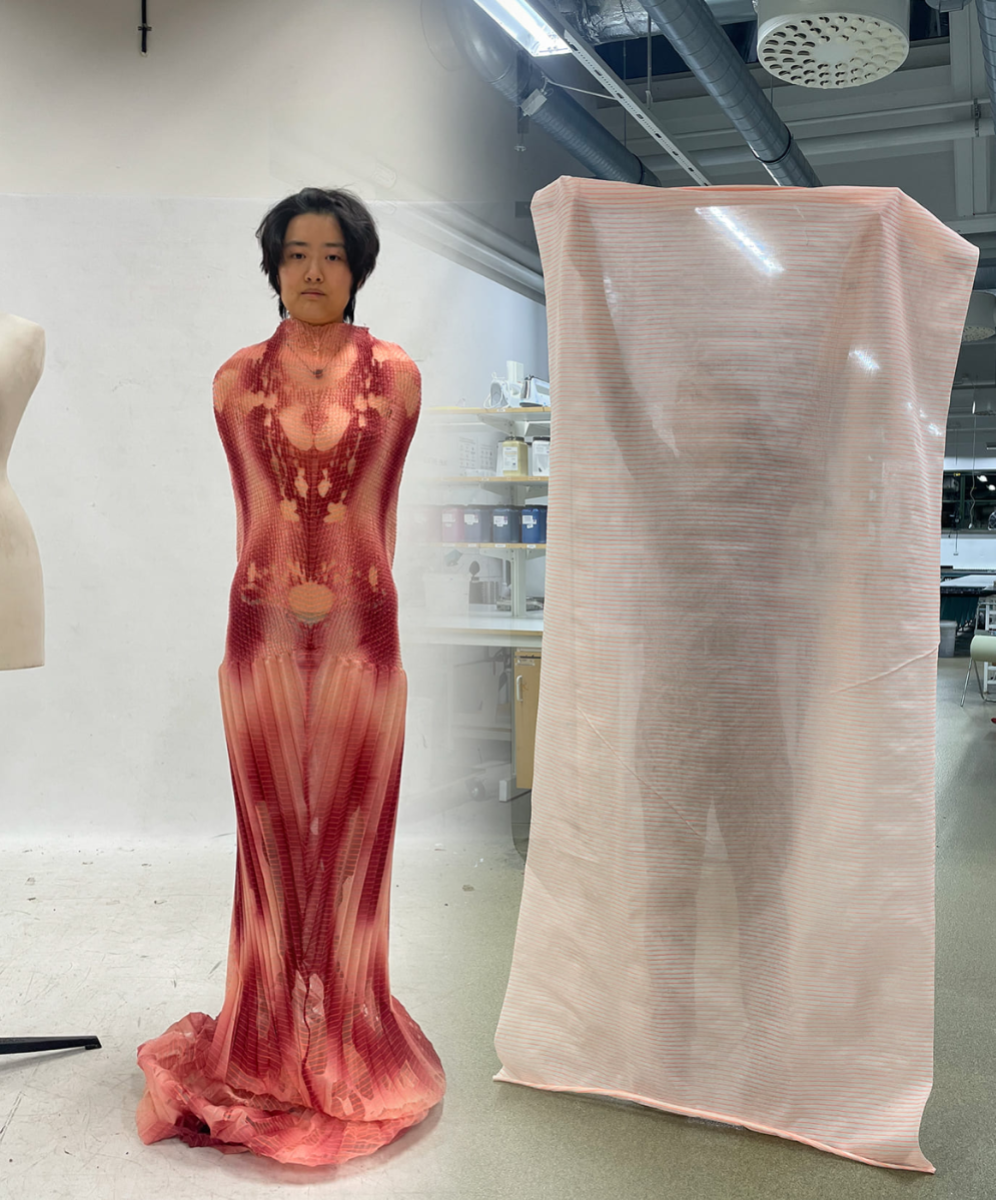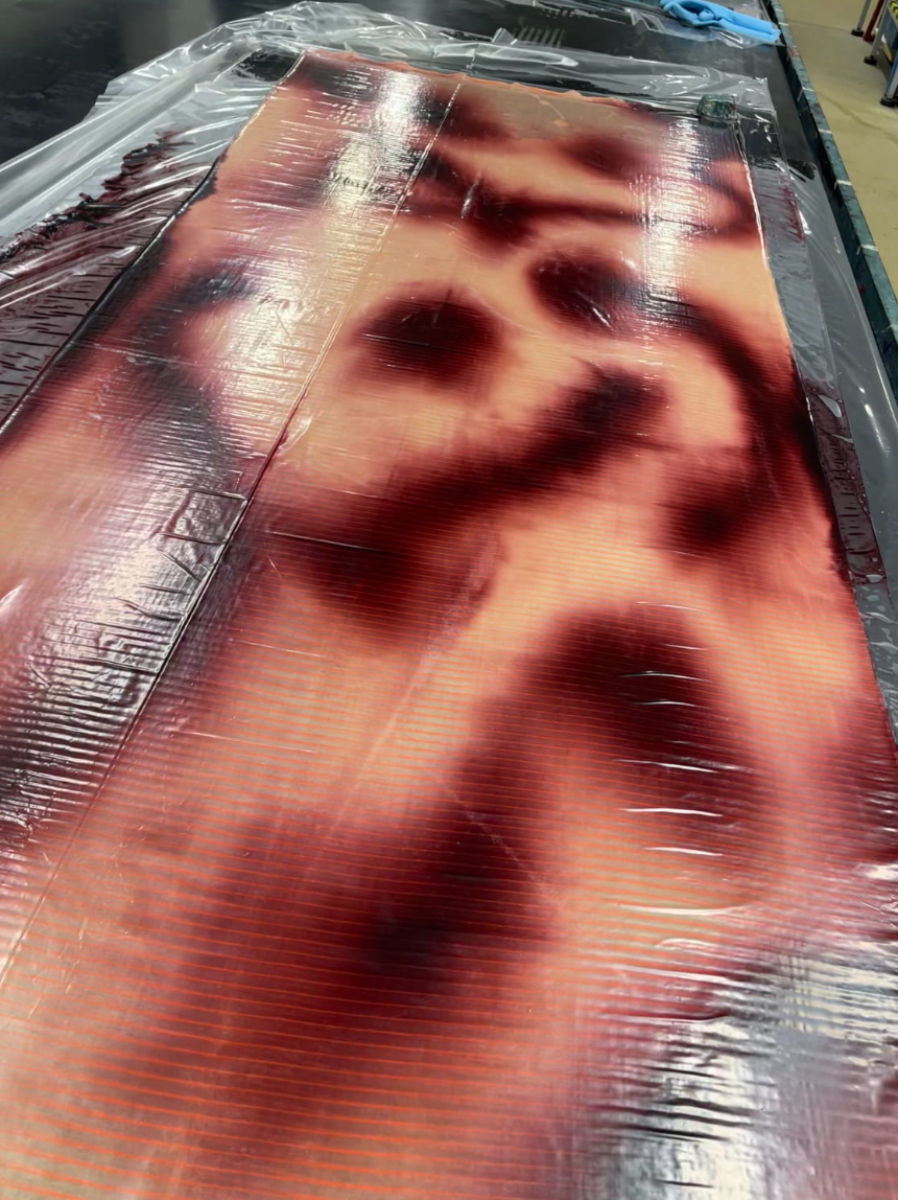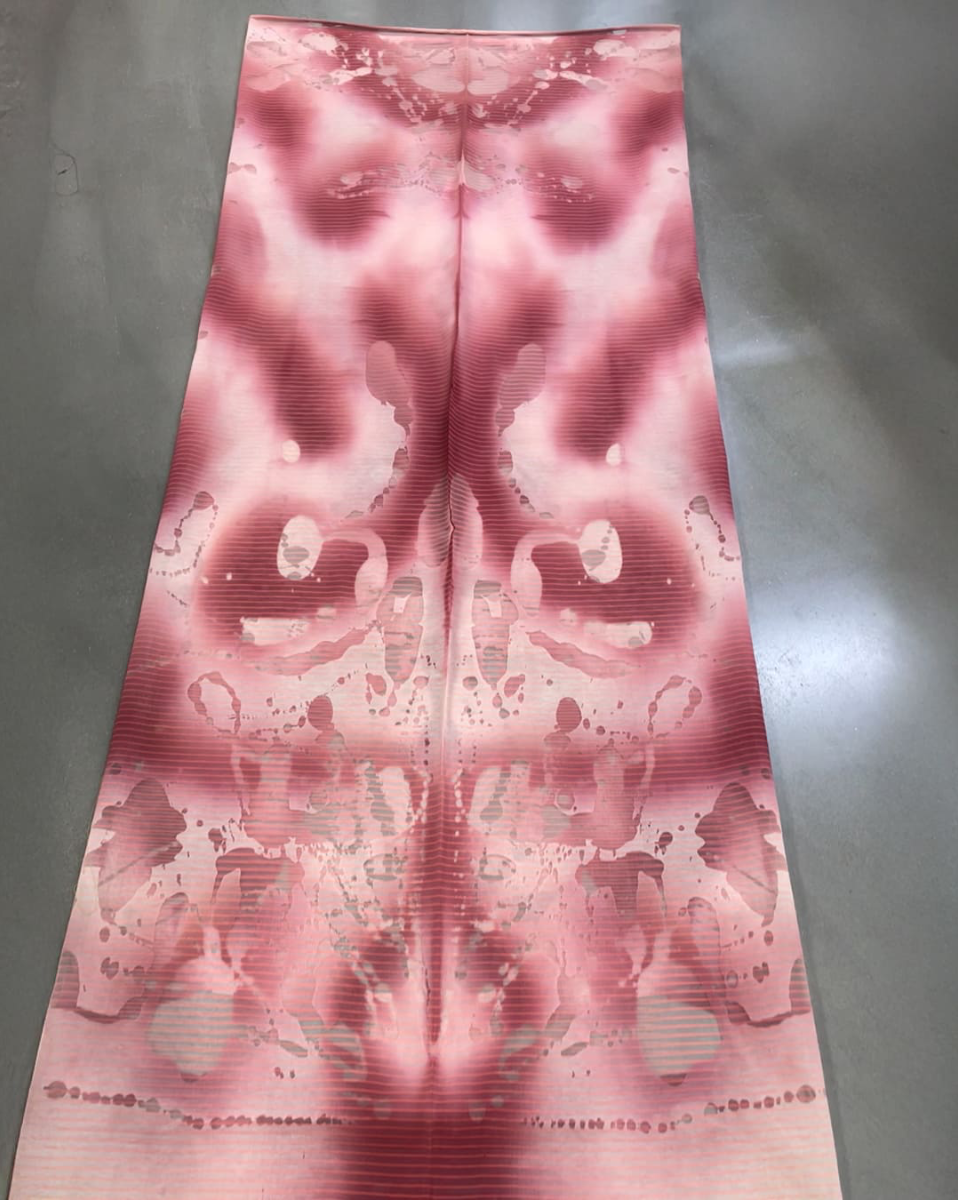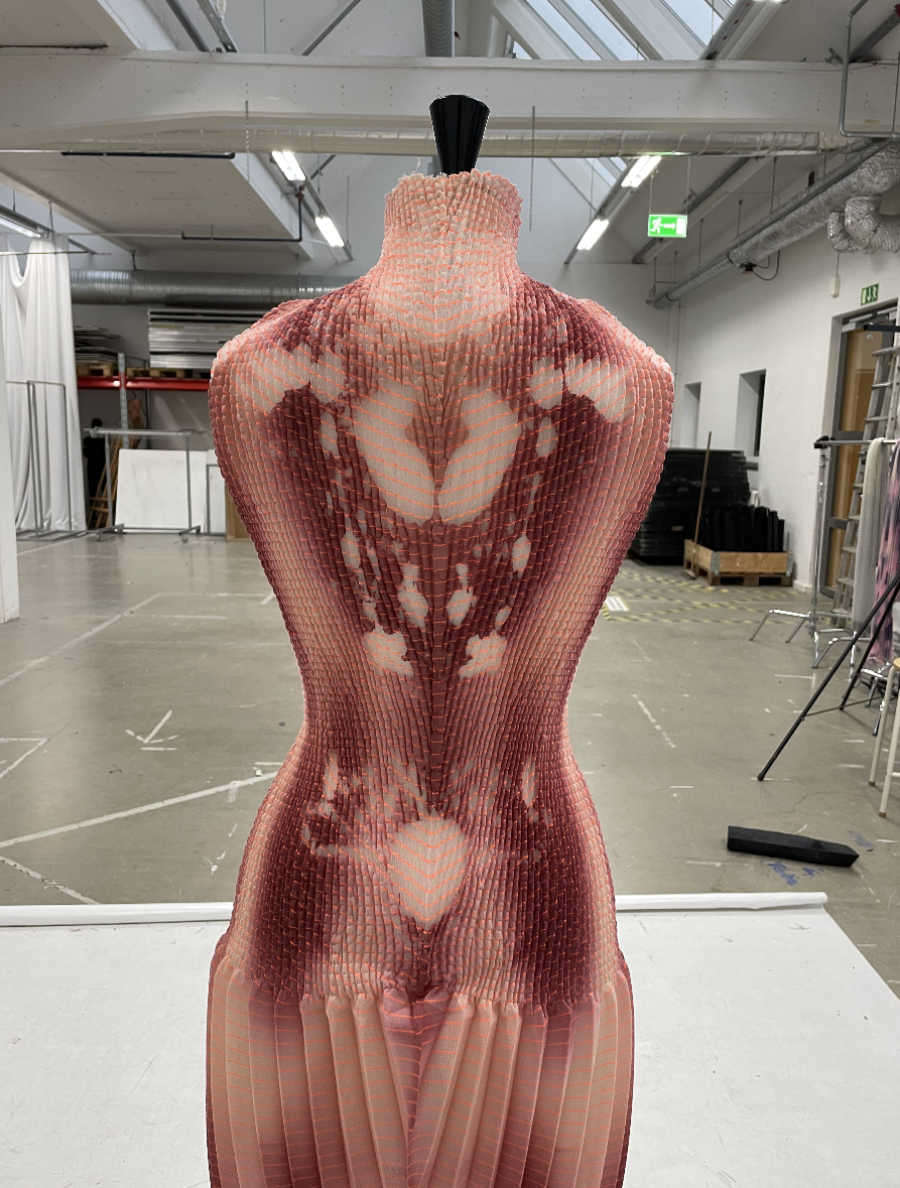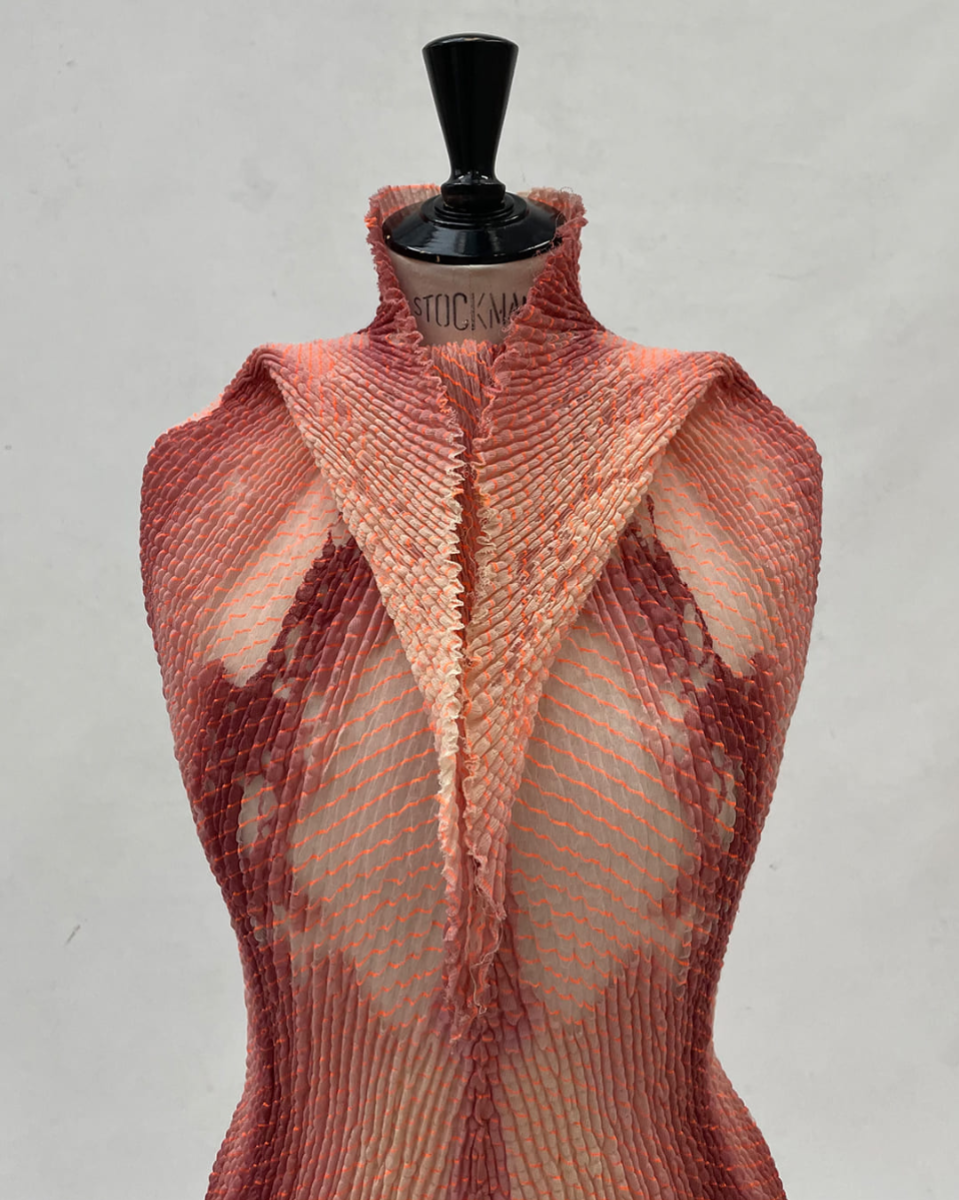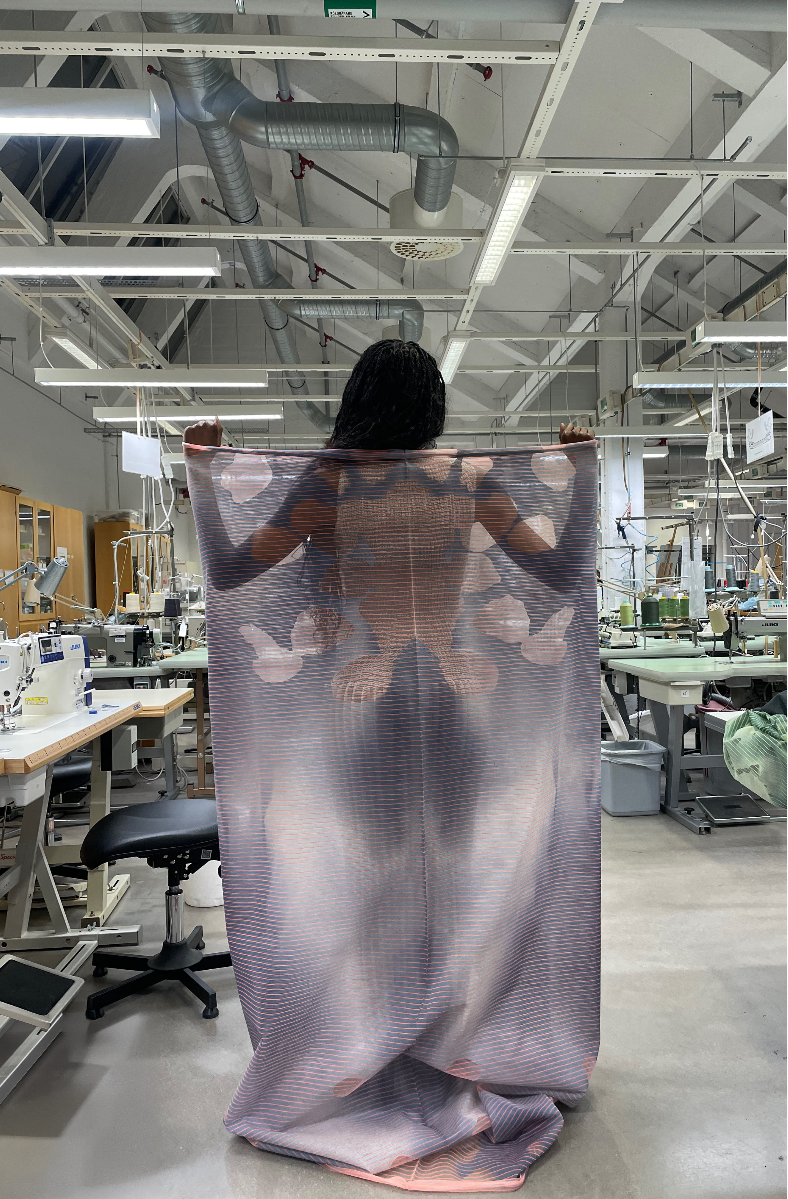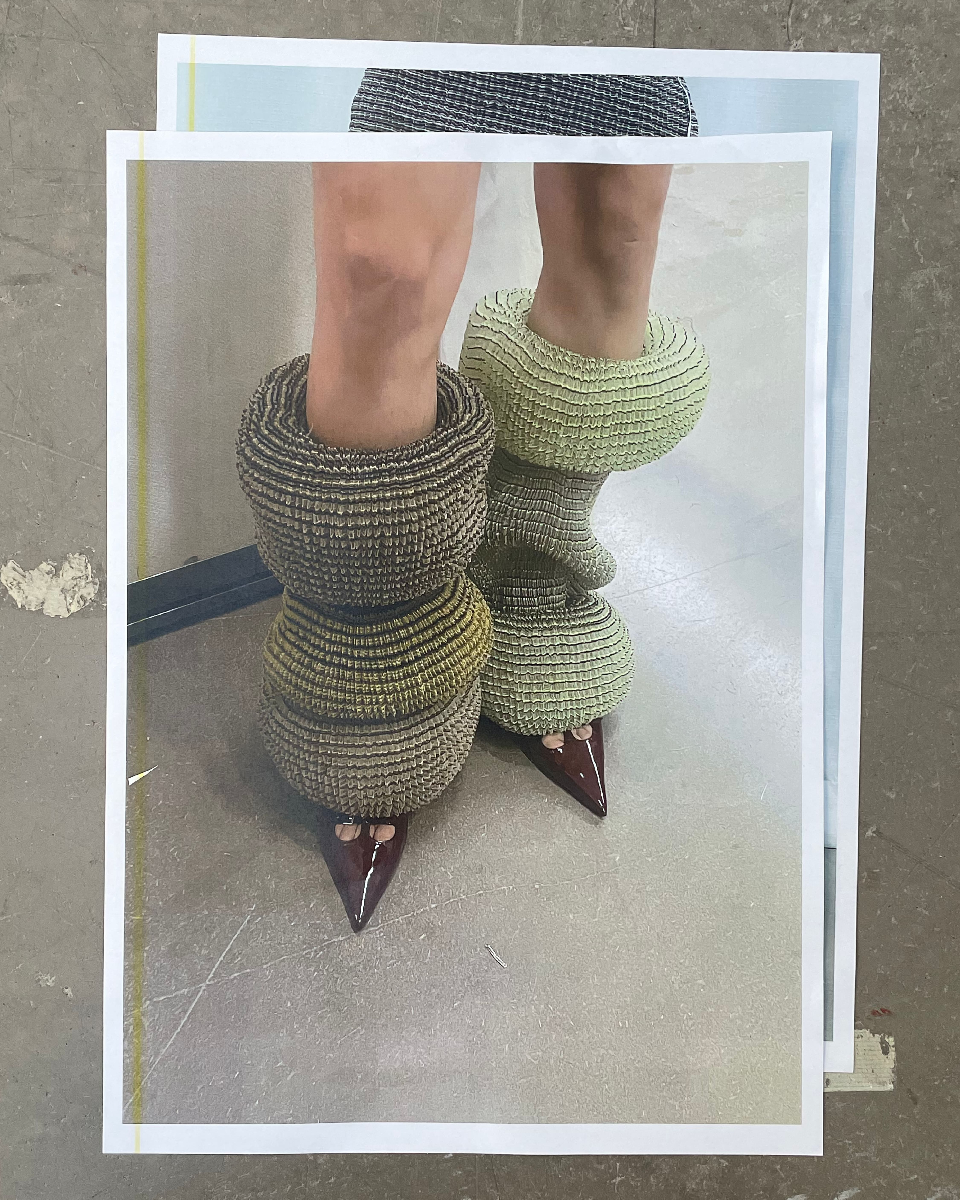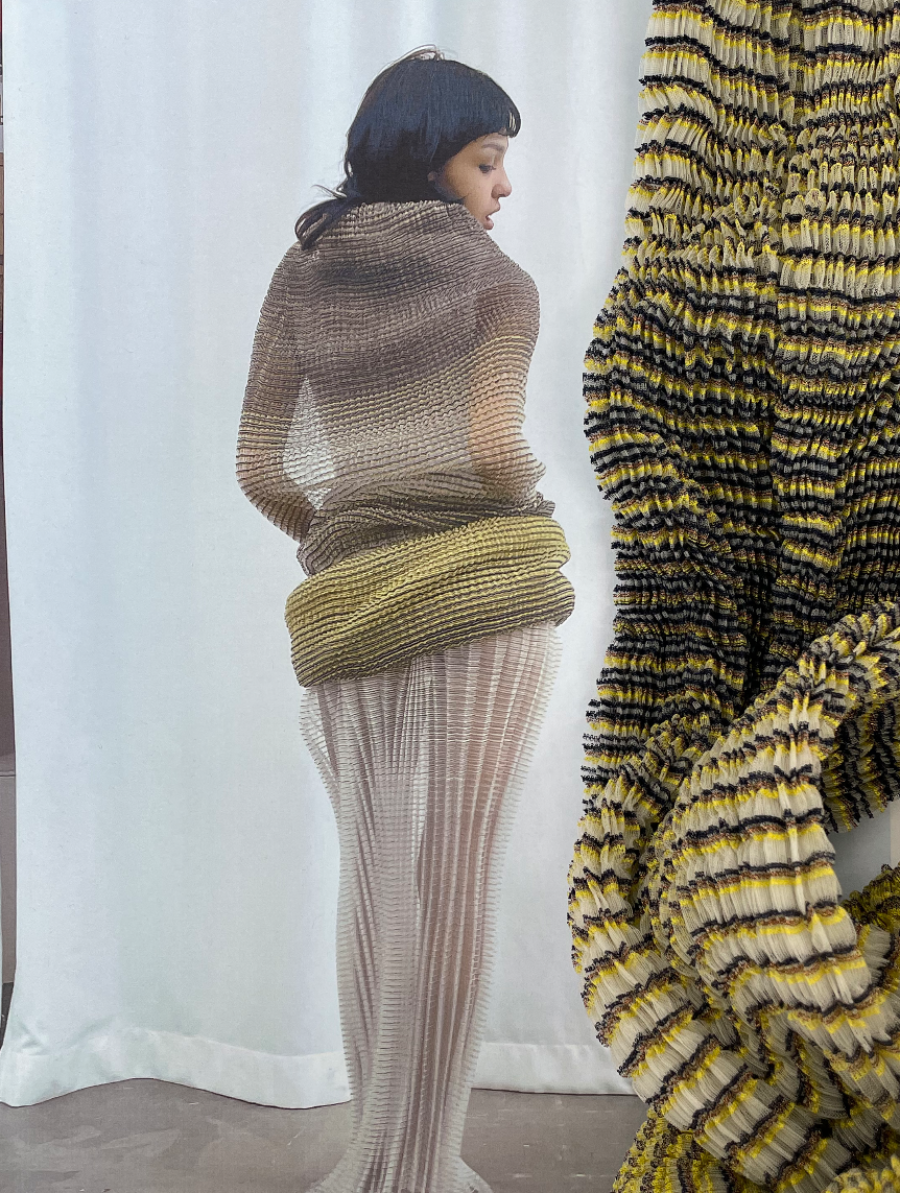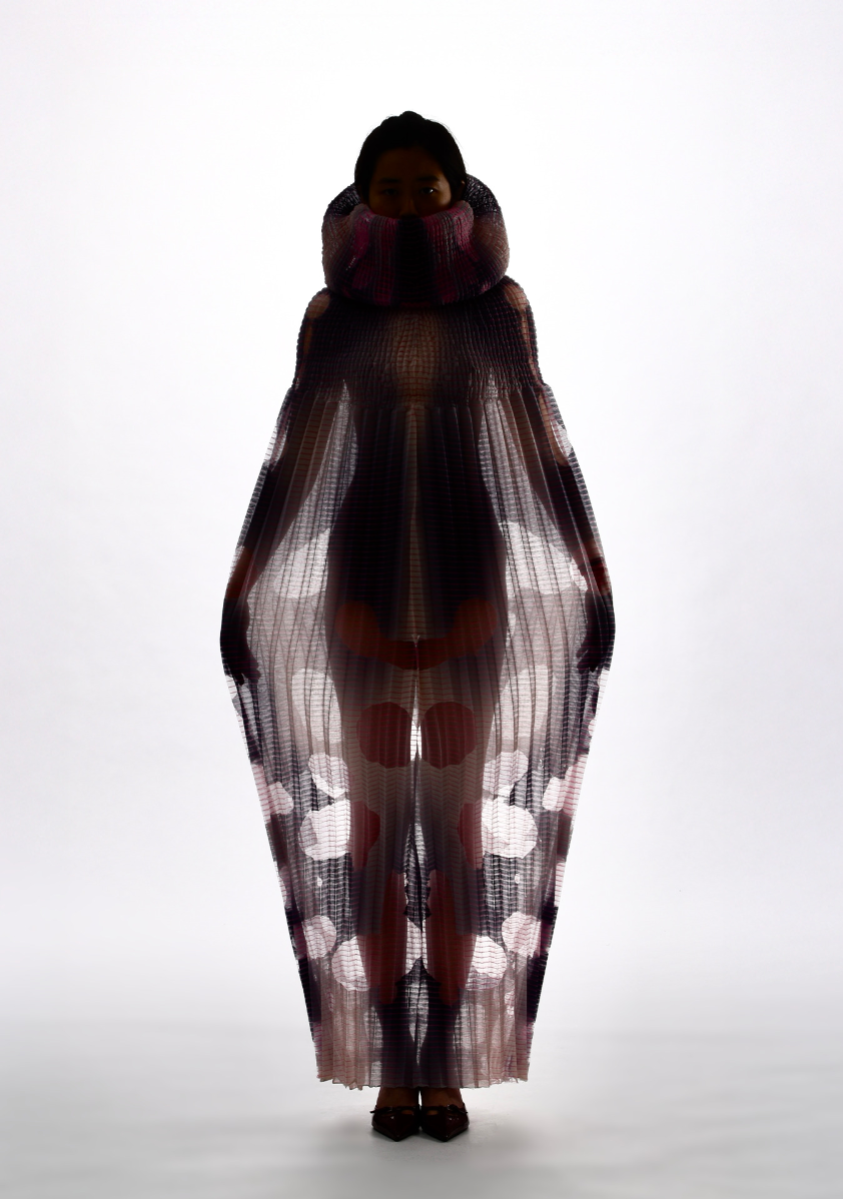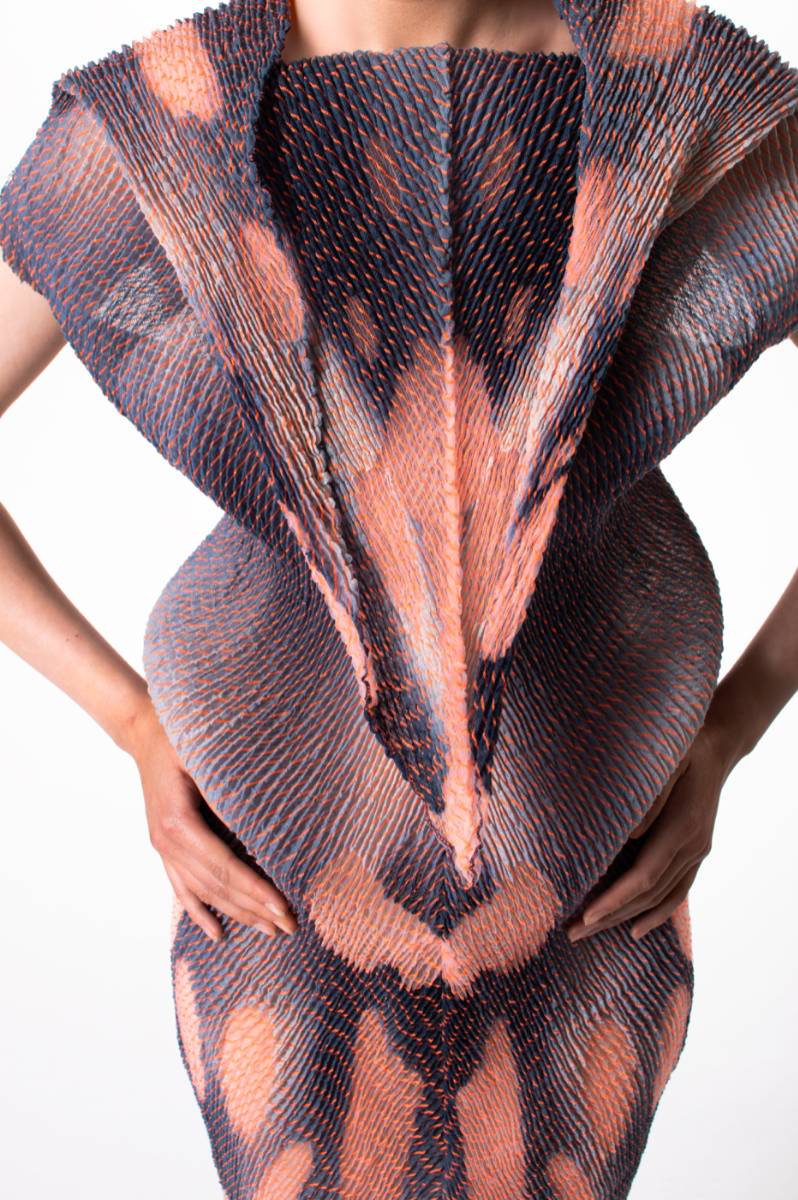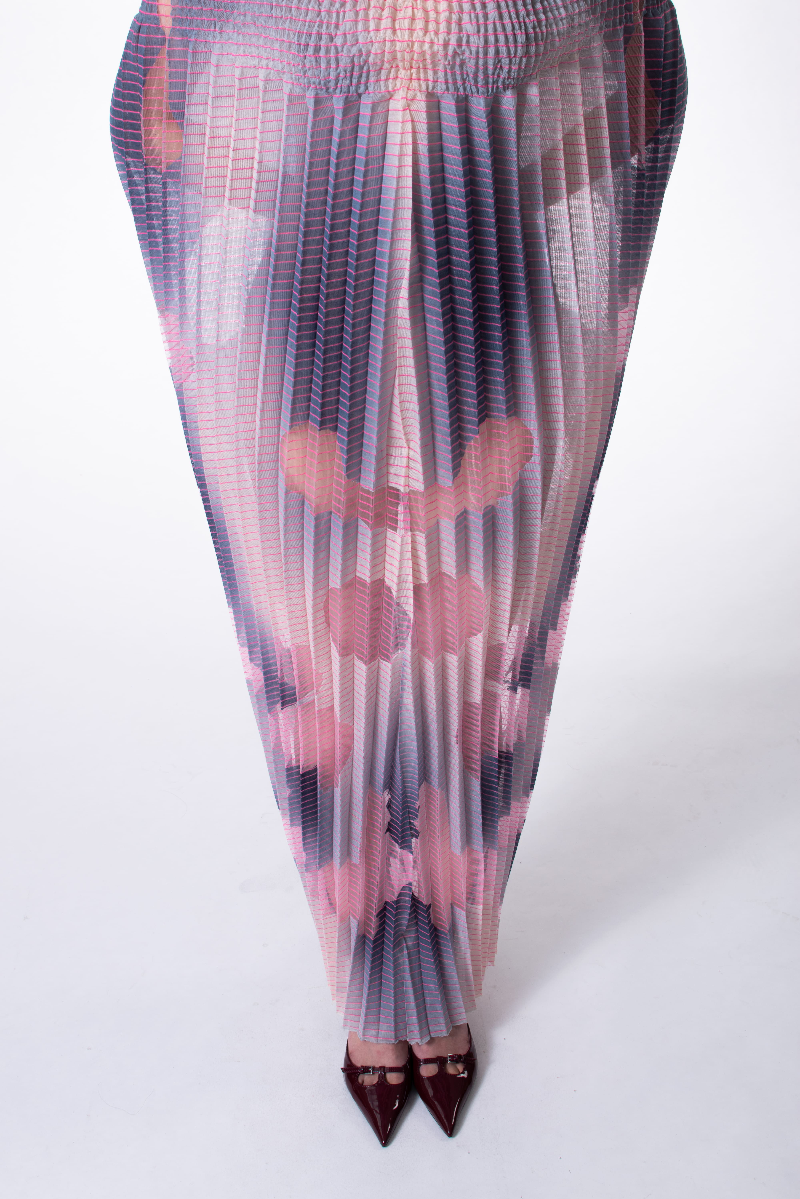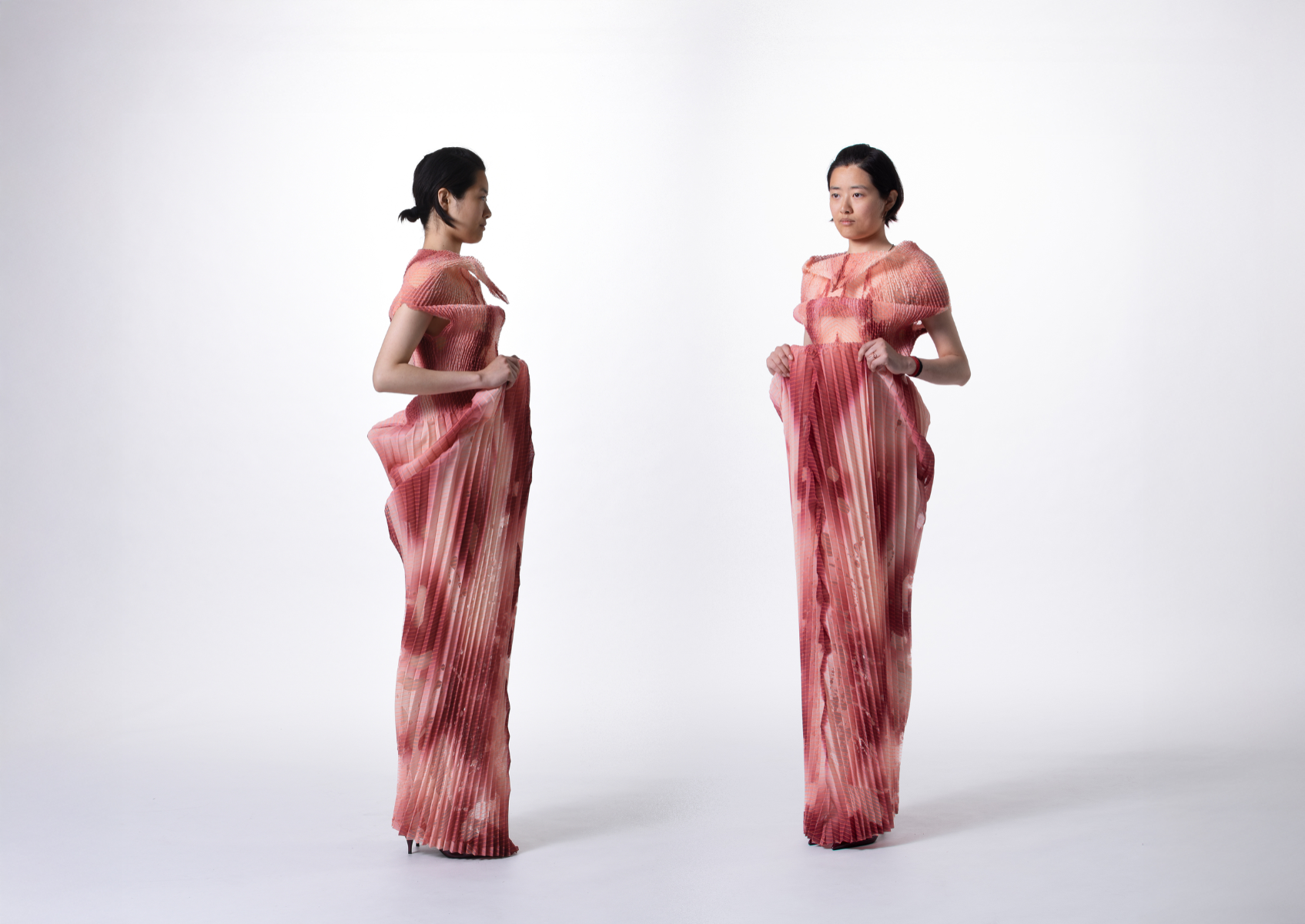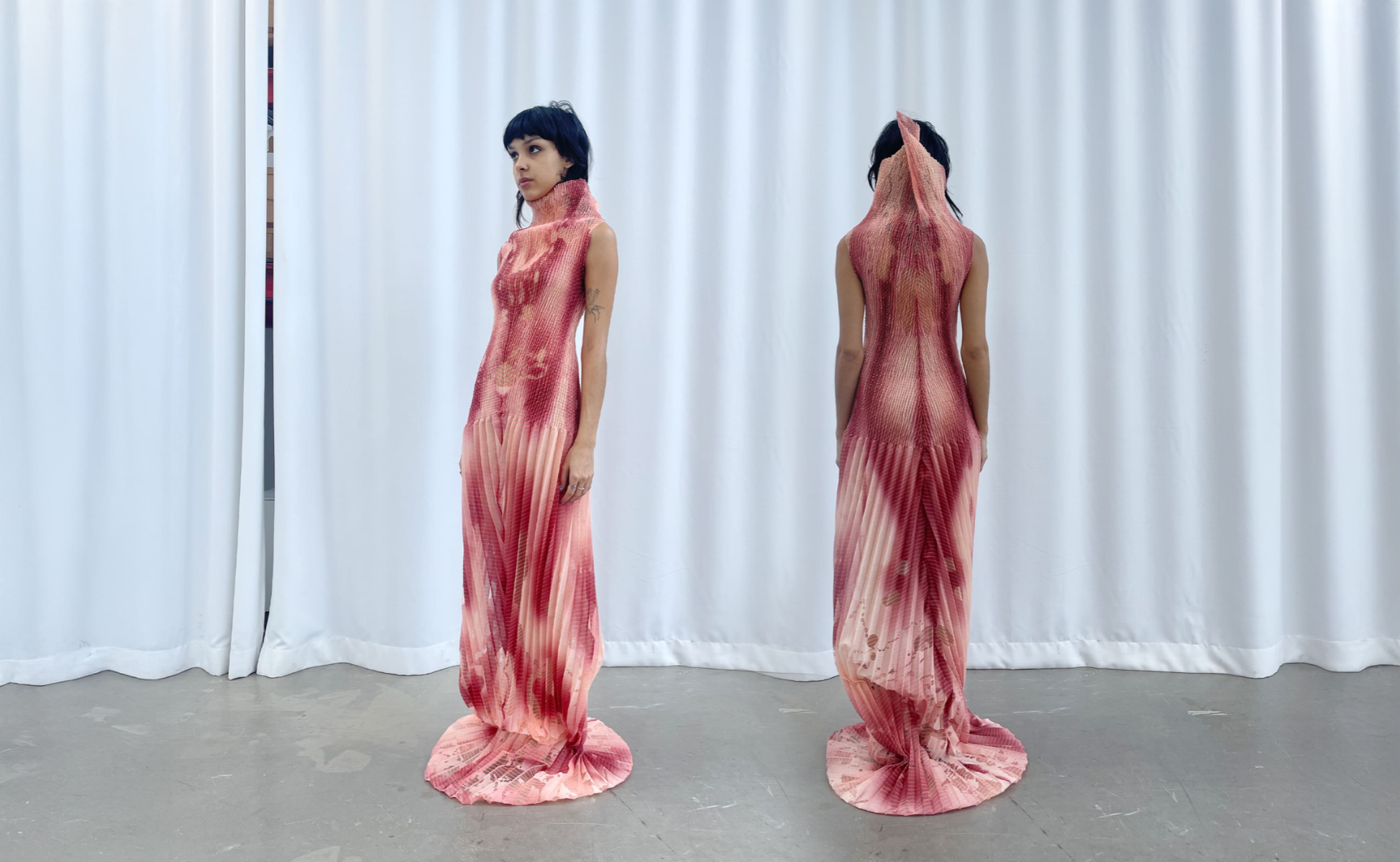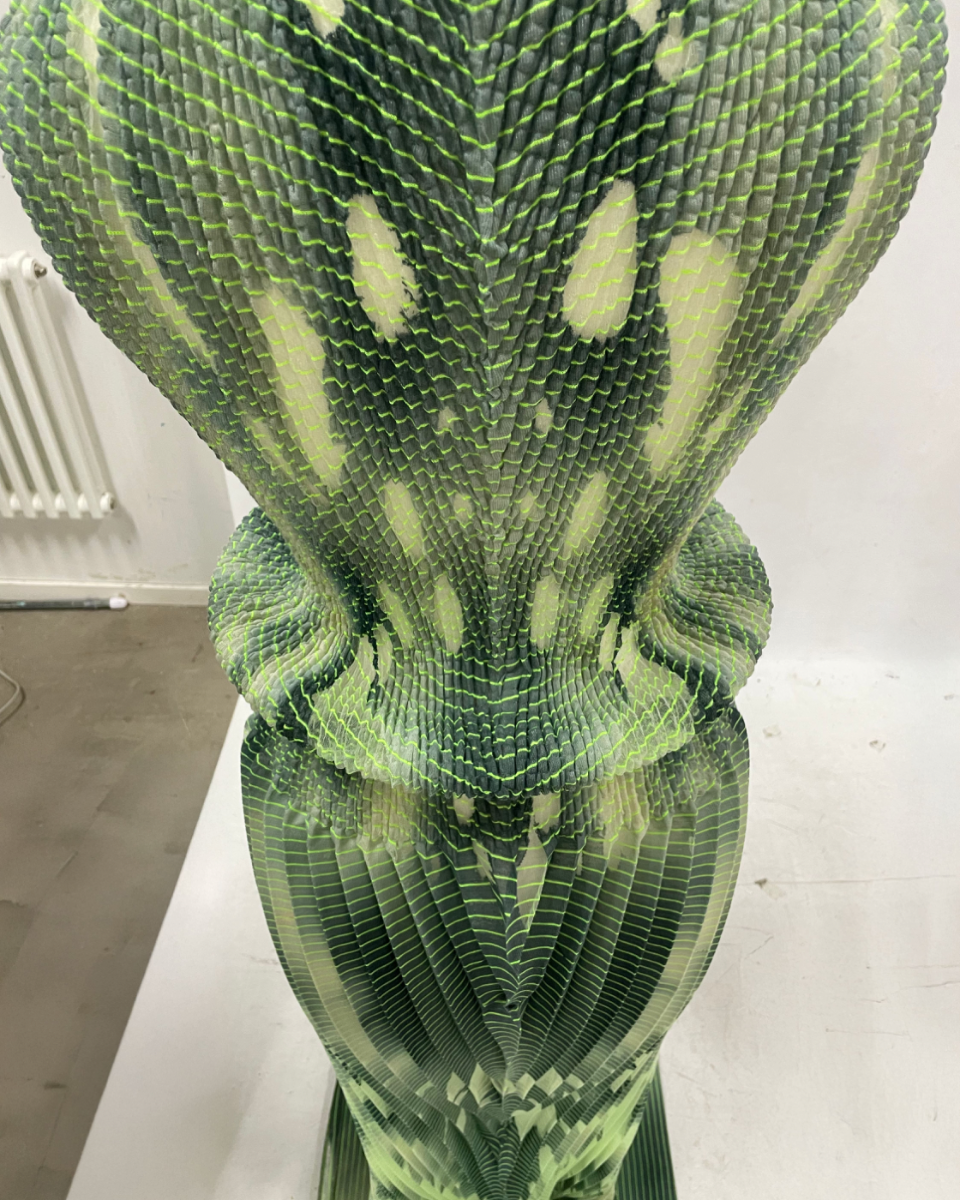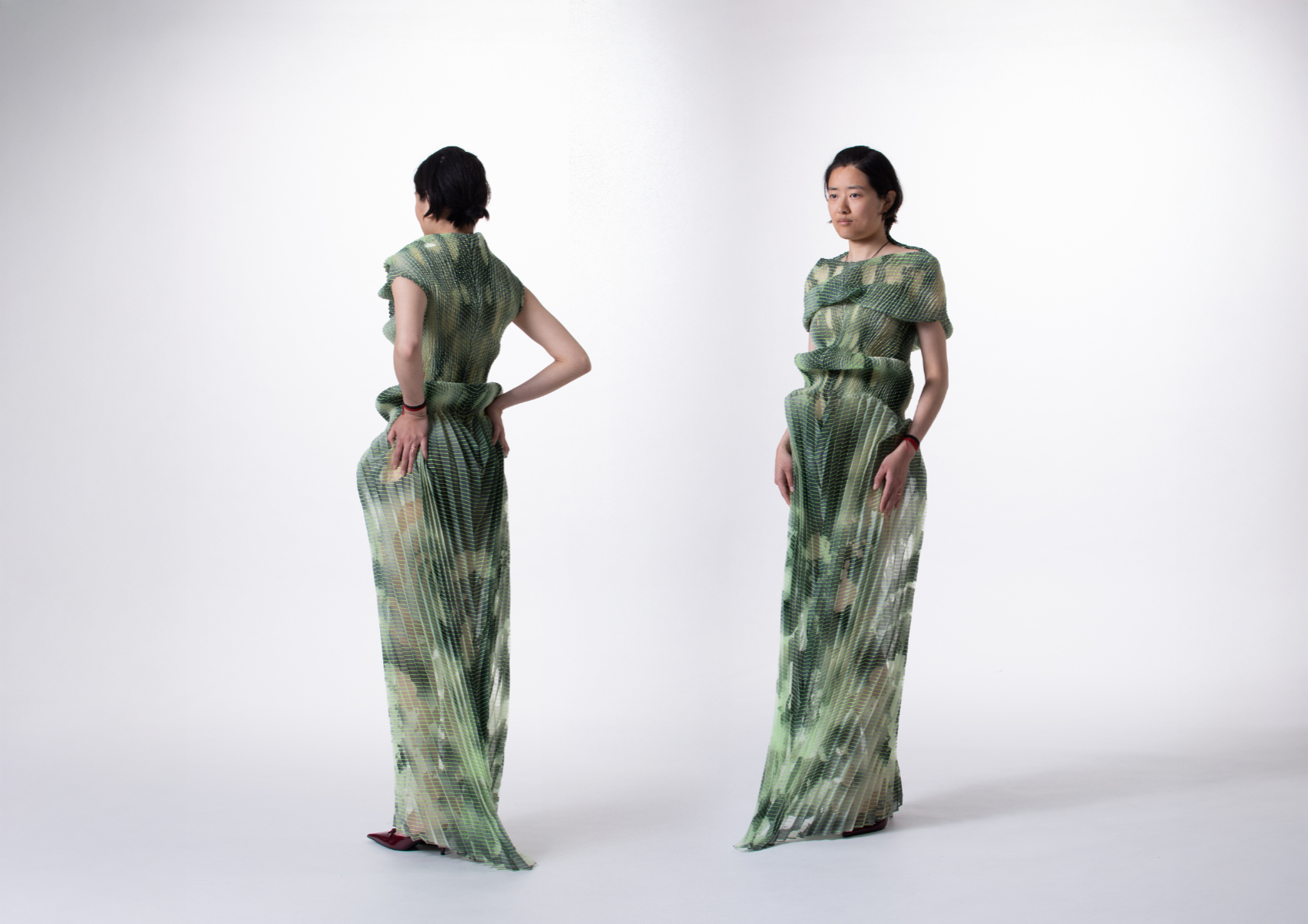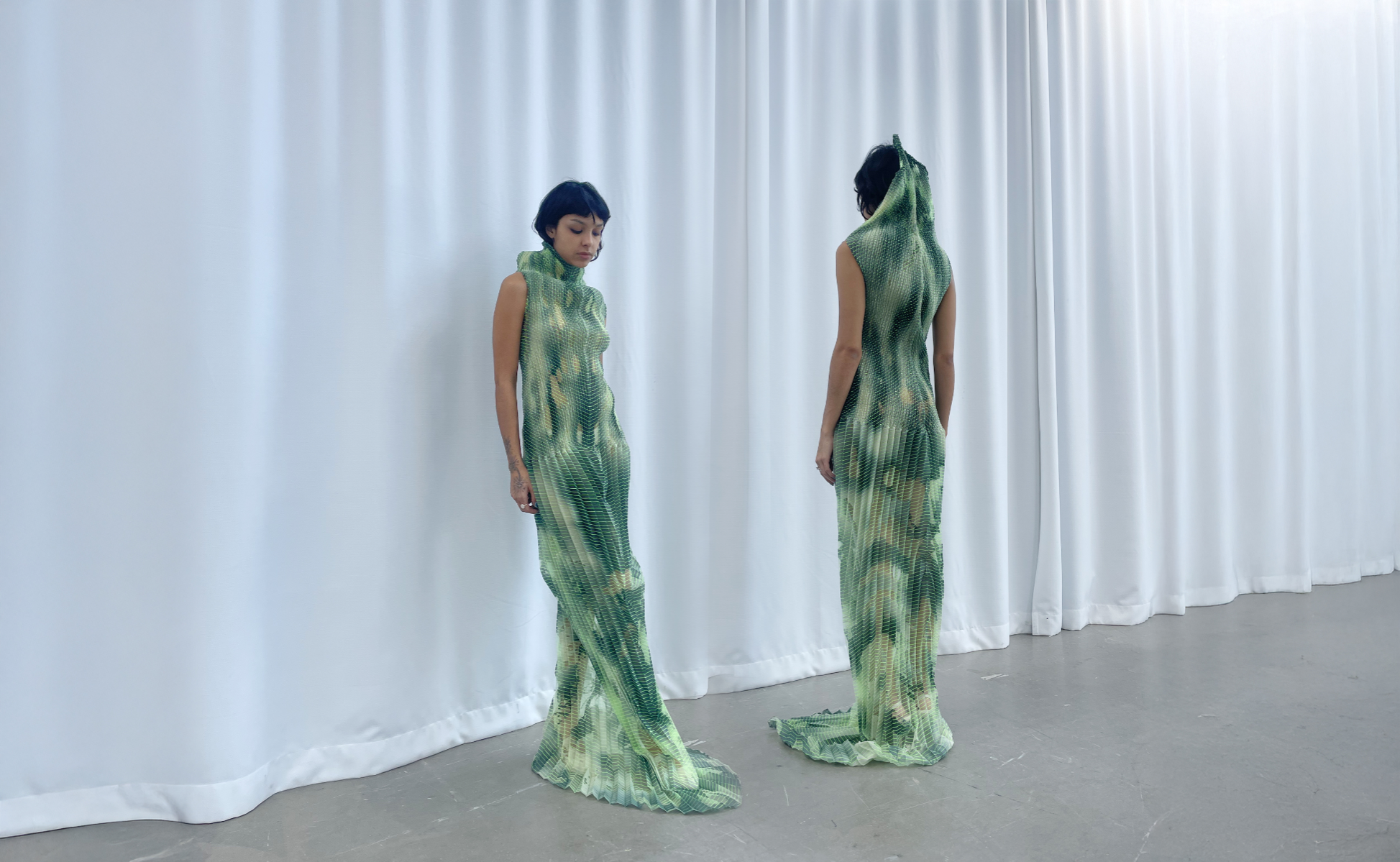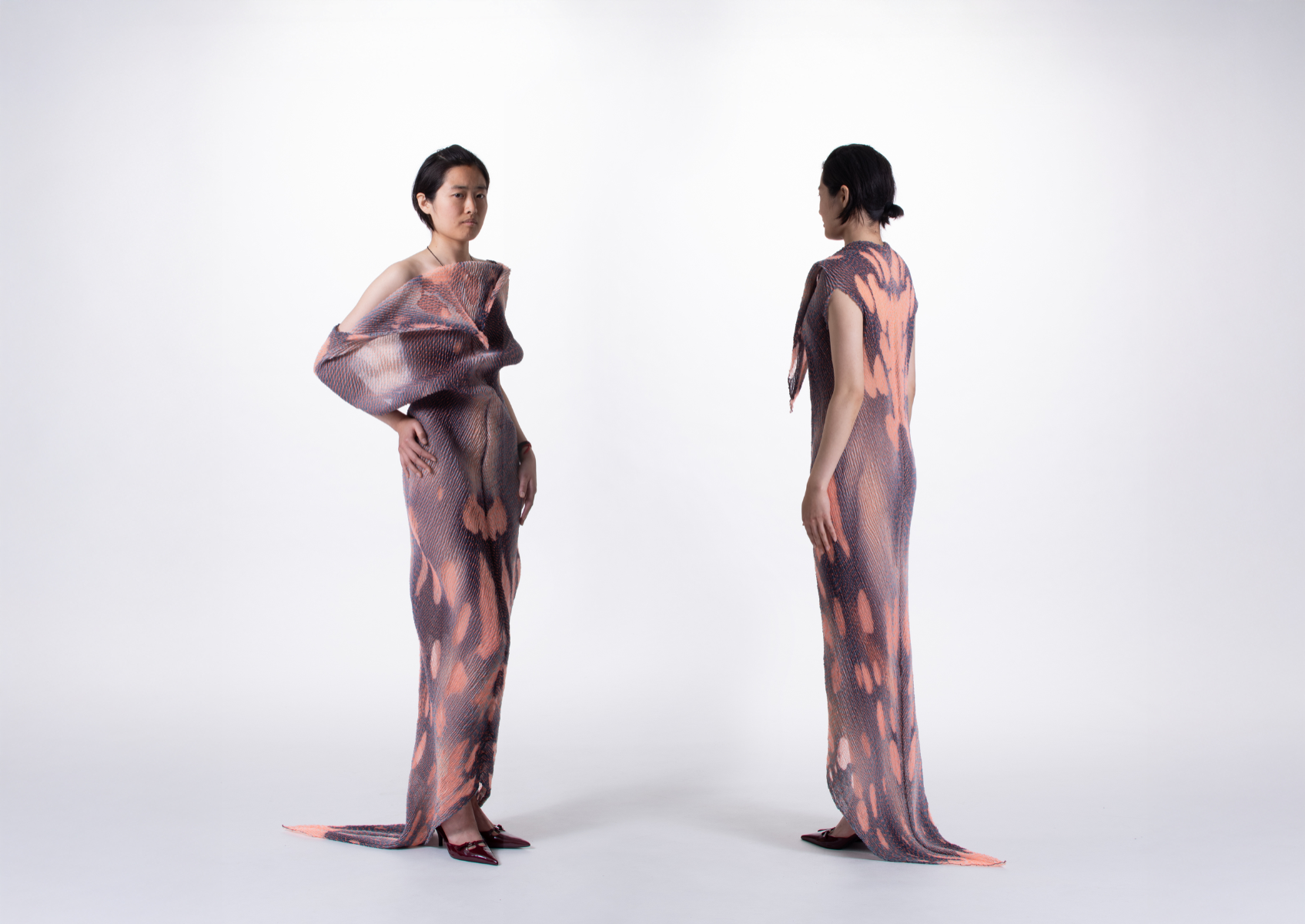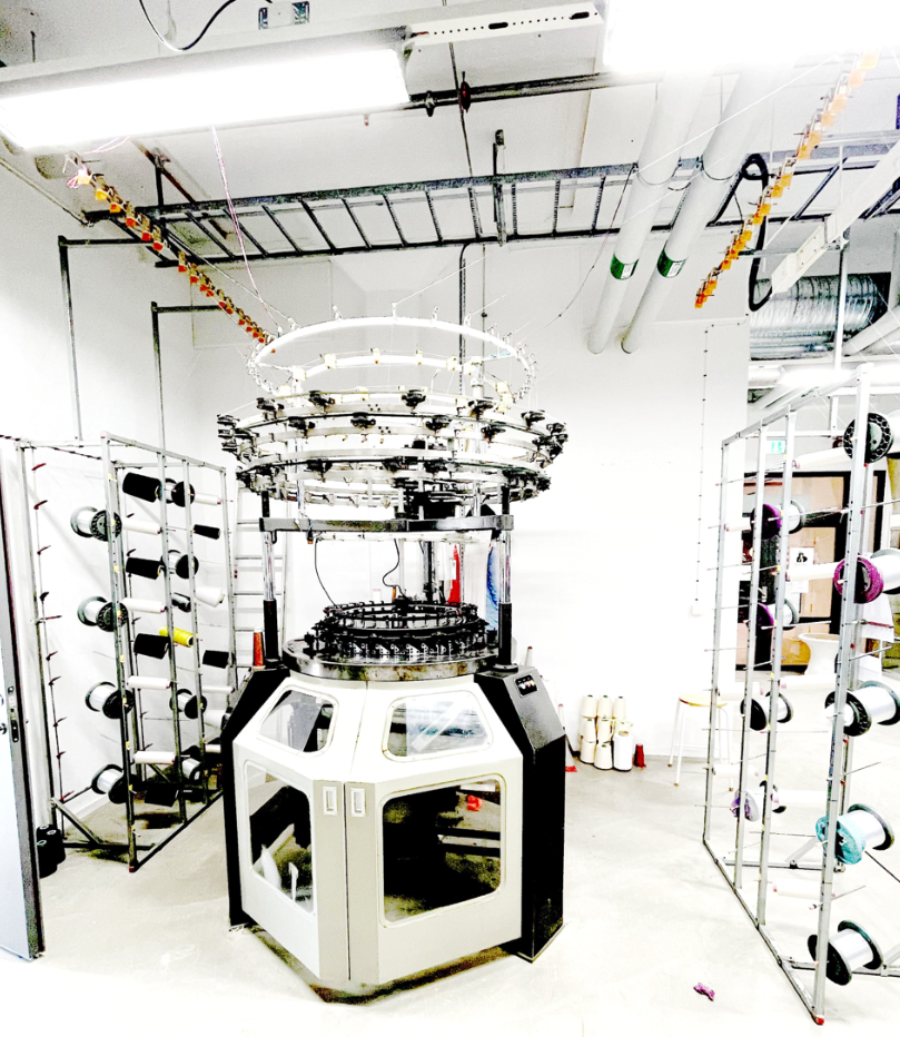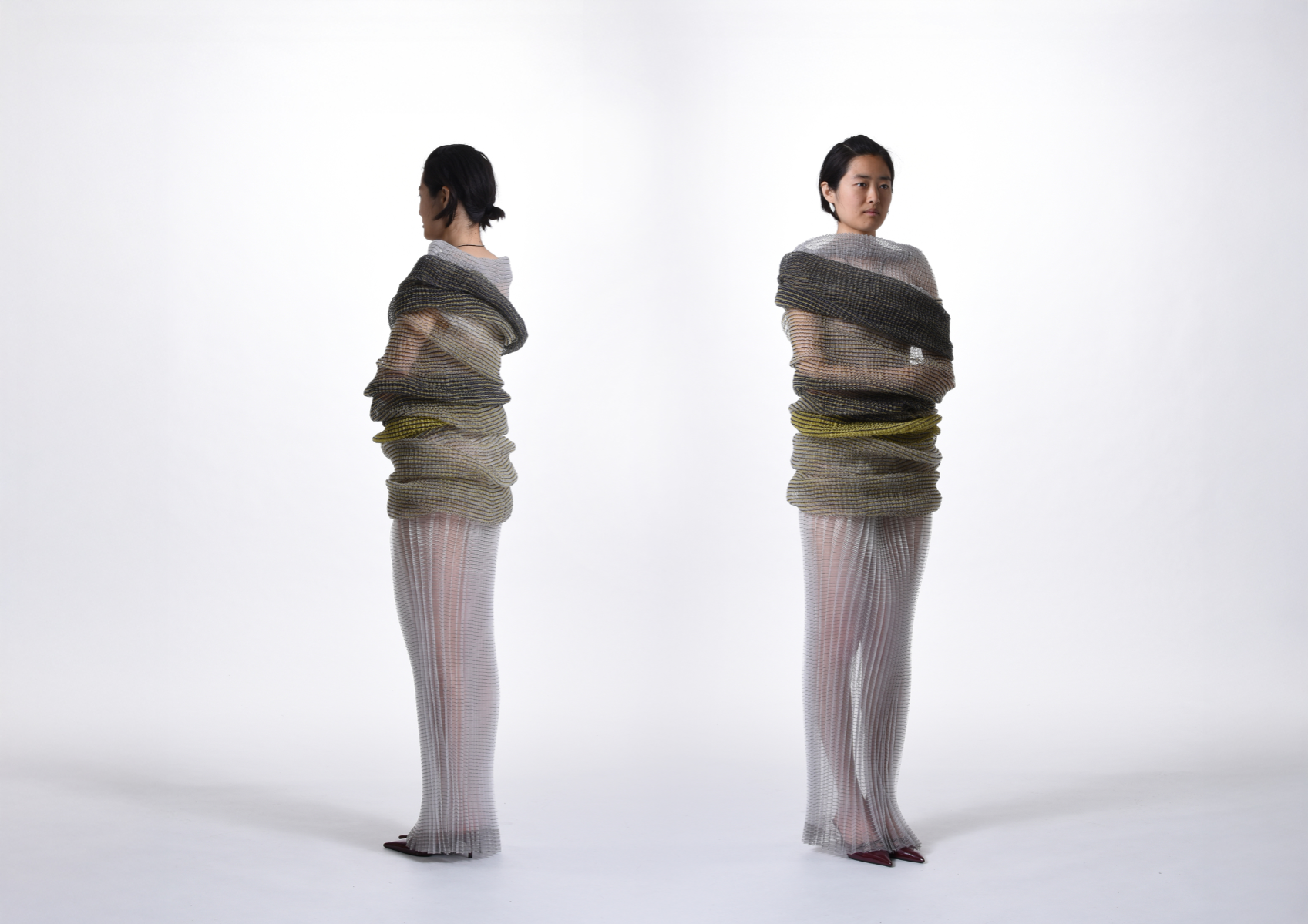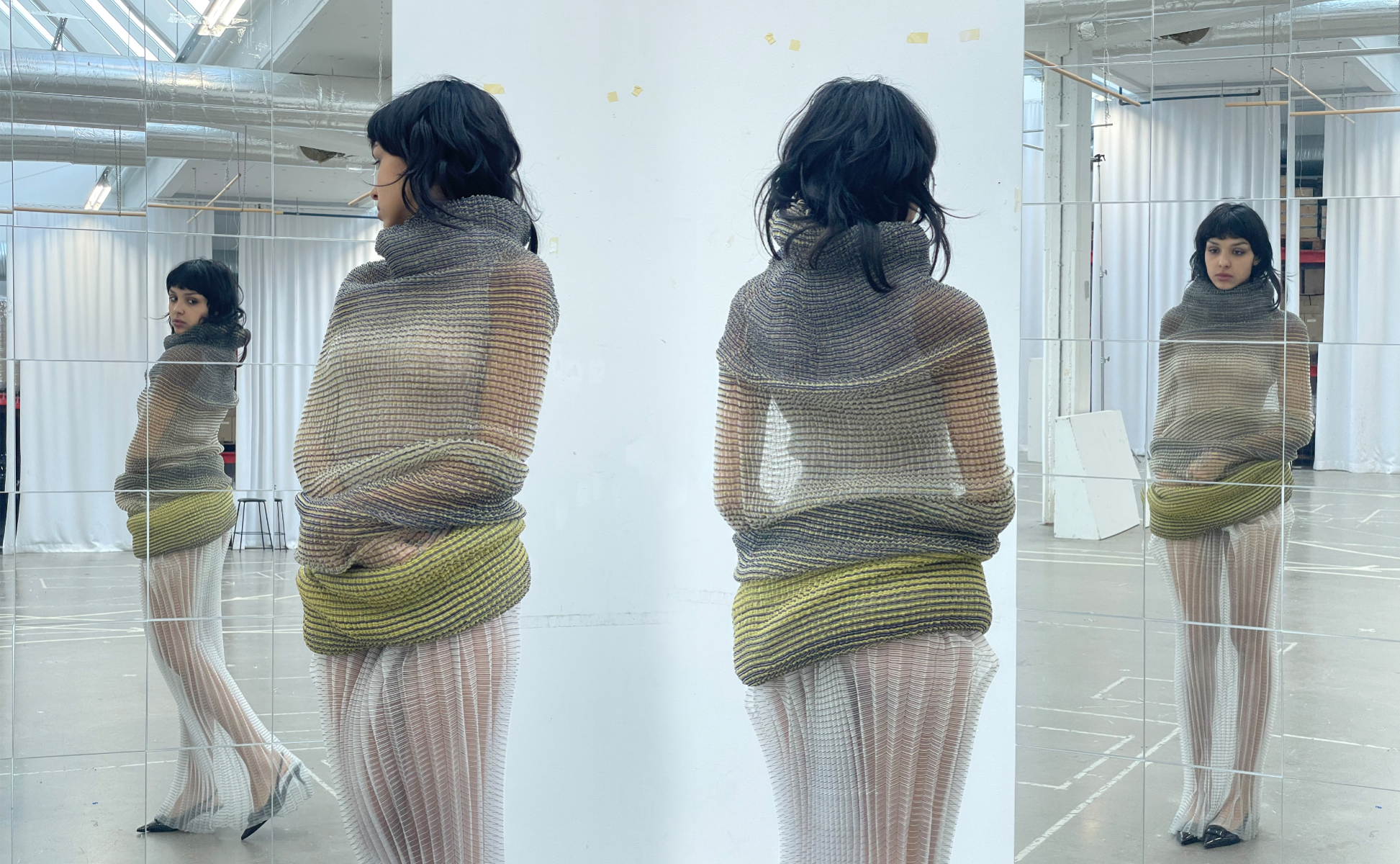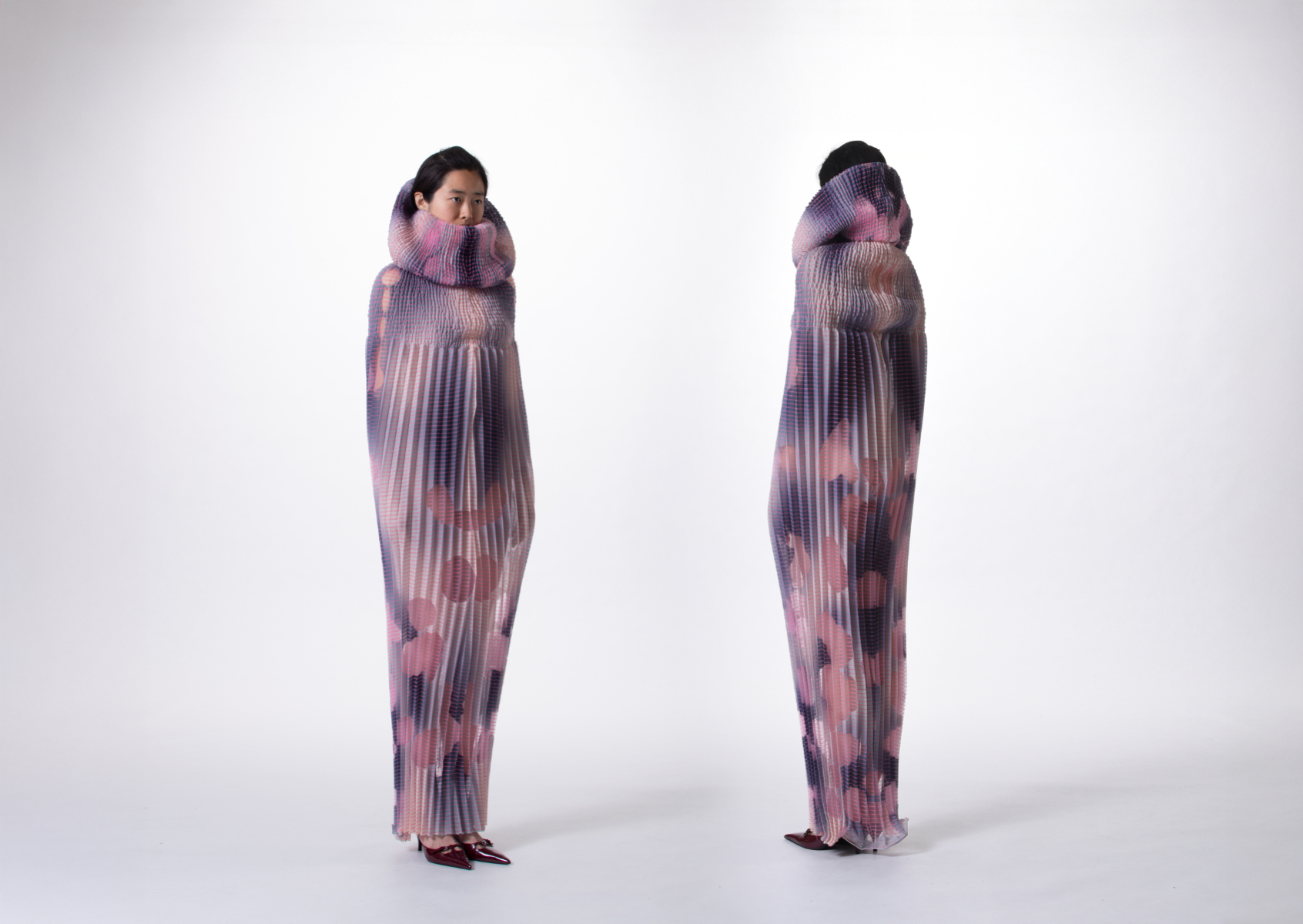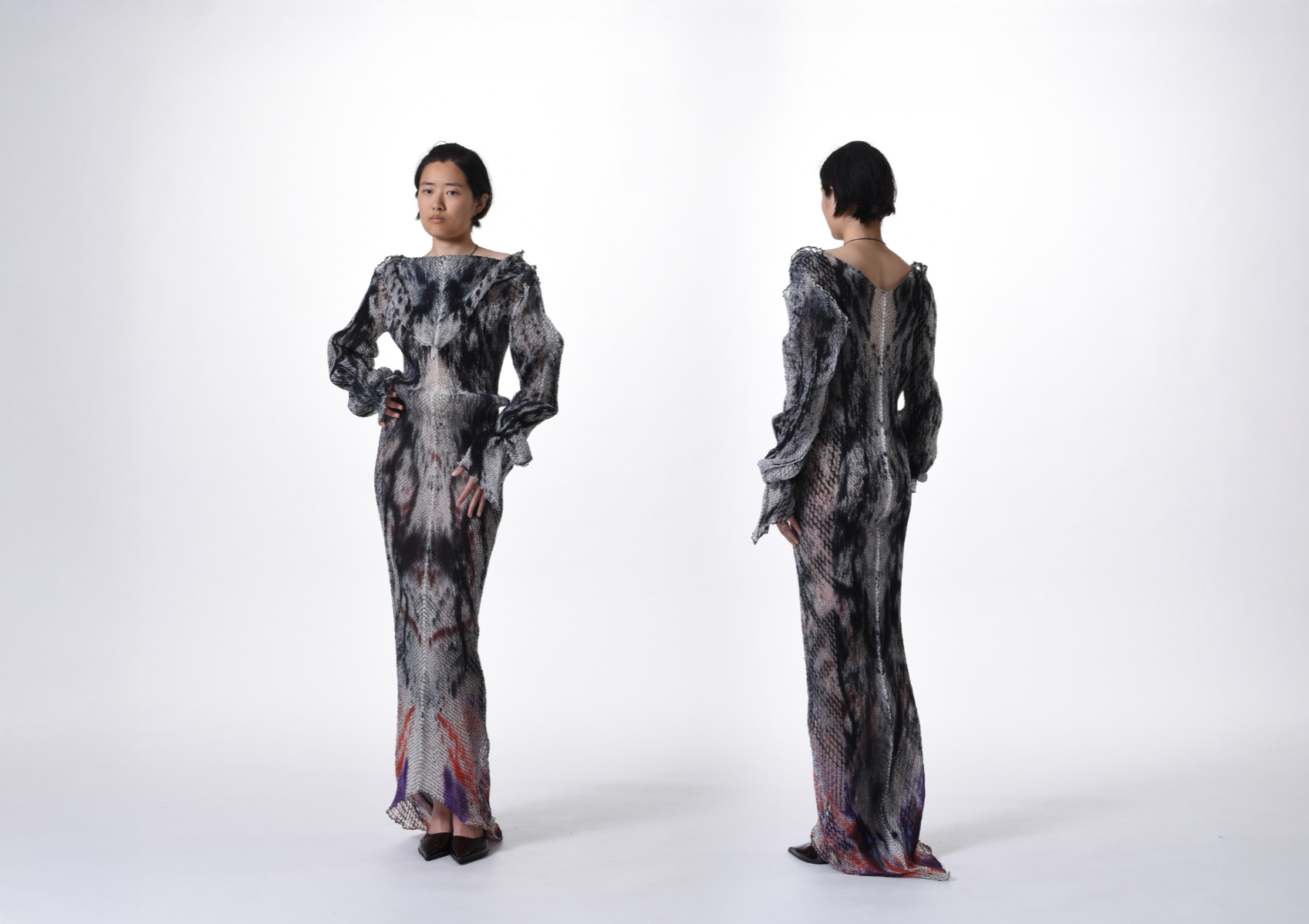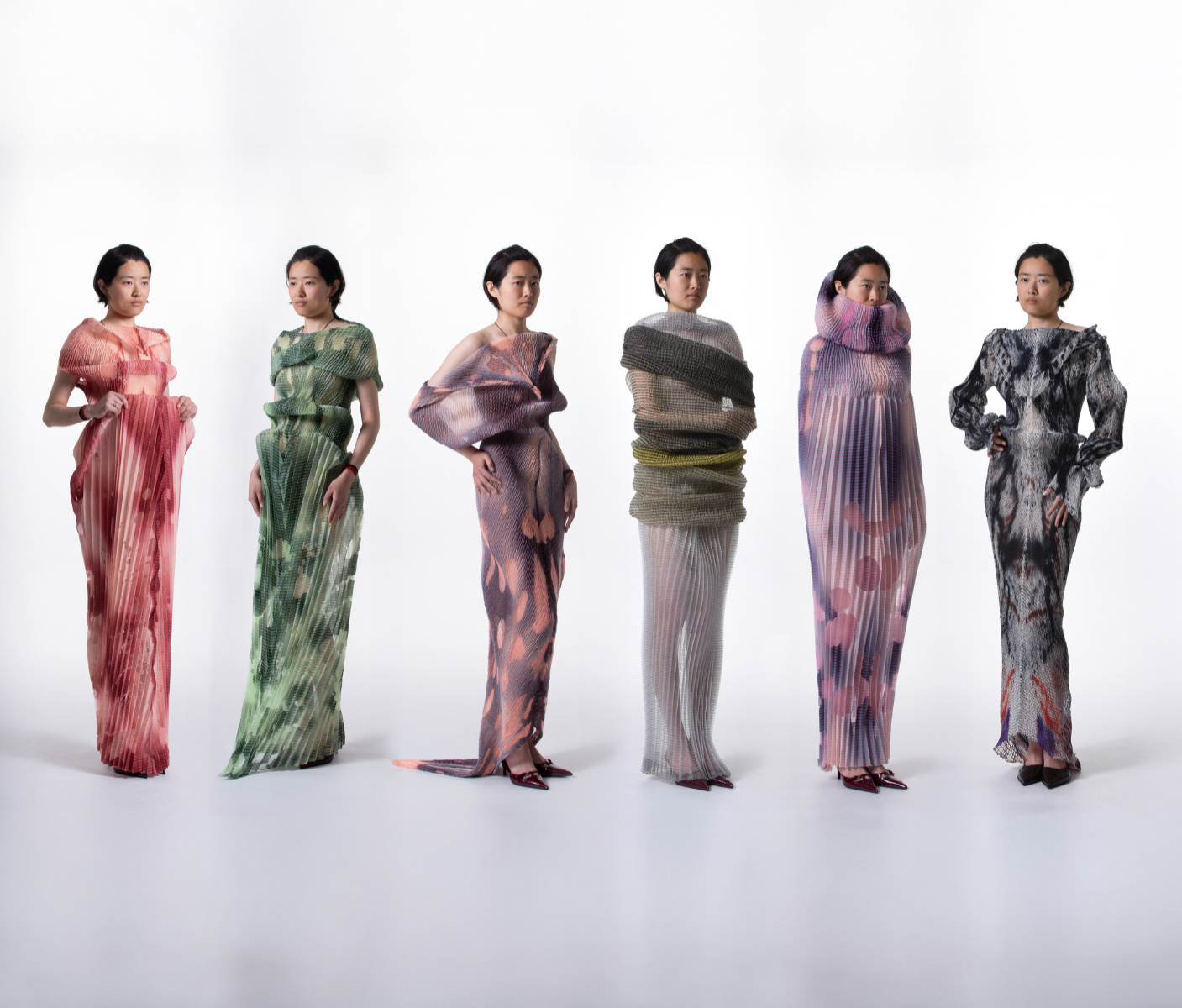LAN KREBS
Fashion Design MA
The Swedish School of Textiles, University of Borås
Specialisms: Textiles - Knit / Textiles for Fashion / Womenswear
Location: Ljubljana, Slovenia


LAN KREBS

First Name: LAN
Last Name: KREBS
Specialisms: Textiles - Knit / Textiles for Fashion / Womenswear
Sectors:
My Location: Ljubljana, Slovenia
University / College: The Swedish School of Textiles, University of Borås
Course / Program Title: Fashion Design MA
About
about me:
I am a Master’s graduate from the Swedish School of Textiles, where I specialized in knitting with a particular focus on circular knit techniques. Hand-operated knitting machines were central to my process, serving as direct and responsive tools for sketching and prototyping, and allowing me to experiment freely with material and form. In my work, I combined knitting with techniques such as printing, dyeing, and pleating to develop innovative textile surfaces and structures. This multidisciplinary approach enabled me to explore new aesthetics and construction methods that push the boundaries of traditional knitwear.
Digital tools also played a key role in my practice, especially in garment prototyping. I explored their potential to improve design precision, increase efficiency, and encourage more sustainable approaches to production. My aim has been to expand the creative possibilities available to textile designers by bringing together traditional craftsmanship and emerging technologies. Throughout my studies and projects, I’ve been guided by curiosity and a strong commitment to experimentation, sustainability, and material innovation.
about project:
Jersey is often regarded as a simple, utilitarian fabric, plain in appearance and limited in potential. My work reimagines jersey as a dynamic, expressive material. Using machine-made tubular knits, I investigate how layering, wrapping, and sculpting fabric directly on the body can create form without adhering to conventional garment structures. The project redefines jersey’s role in contemporary fashion. Minimal material intervention leads to bold, sculptural and sustainable results. A basic knitted tube becomes a medium for movement, expression and reinterpretation. Each piece begins as a seamless tube, manipulated through pleating, hand gathering and experimentation with angle and transparency. Garments are intentionally open-ended, without a fixed front, back, inside or outside. They invite play, interaction and individual styling choices. I work with cotton and viscose for their responsiveness to color during space dyeing, alongside synthetic fibers that help maintain pleats and preserve devoré effects. Color is chosen intuitively, immediately before dyeing or knitting, based on emotional instinct rather than predetermined palettes. Sustainability is approached as both ecological responsibility and long-term engagement with the systems that support creative work. By focusing on industrially standardized fabrics like single jersey, I explore how subtle, intentional manipulations can radically transform structure and surface. The goal is to echo the complexity of natural forms through material behavior. Through this process-led practice, a static and often overlooked fabric evolves in form, function, and visual language. The final outcomes demonstrate how even the most ordinary material can become extraordinary through thoughtful transformation.
Jersey is often seen as plain and utilitarian, but my work reimagines it as a dynamic, expressive material. Using machine-made tubular knits, I explore layering, wrapping, and sculpting fabric directly on the body to create form without conventional structures. Seamless tubes become mediums for movement and reinterpretation, manipulated through pleating, gathering, and transparency. Garments remain open-ended, inviting play and personal styling. Cotton, viscose, and synthetics allow for color responsiveness, pleat retention, and devoré effects. Sustainability guides the process, transforming standardized jersey into bold, sculptural outcomes that echo natural complexity and reveal how ordinary materials can become extraordinary.
Competitions



